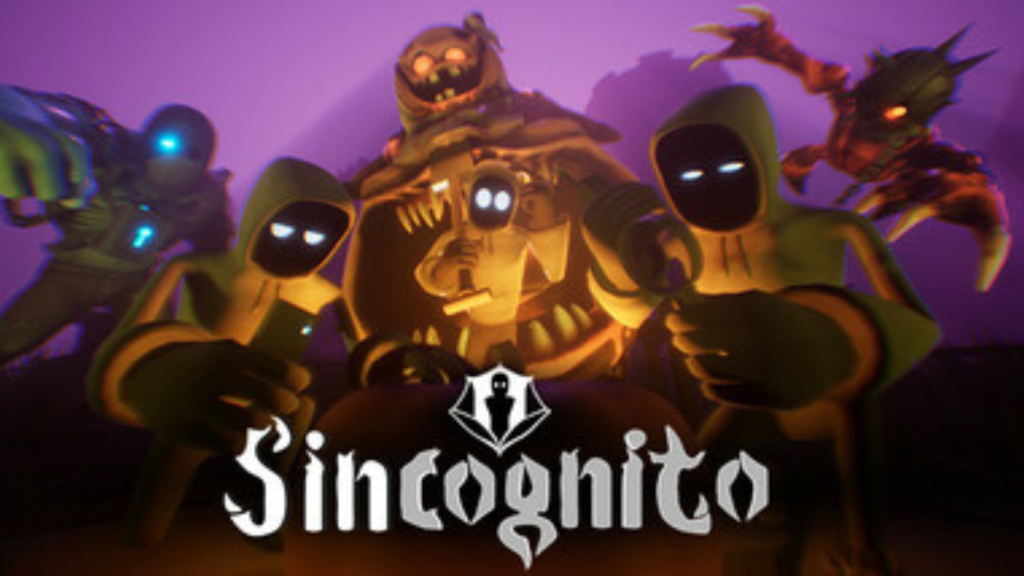Sincognito stands at the intersection of social deduction, stealth, and horror. Inspired by the 7 Deadly Sins, this game delivers a chilling experience that combines dark narrative elements, mind games, and psychological horror. Here’s a breakdown of what makes Sincognito stand out in the gaming world. 1. The Core Concept: In Sincognito, players assume roles influenced by the Seven Deadly Sins, each representing a unique power, personality, and approach to survival. The game emphasizes stealth, deception, and tactical gameplay. Players must navigate a labyrinthine world, where trust is scarce and every interaction can lead to betrayal. 2. Gameplay Mechanics: Social Deduction: Much like Among Us or The Resistance, Sincognito revolves around suspicion, strategy, and psychological manipulation. Players must work together to uncover the identities of the Sinners while hiding their own. Stealth: The game challenges players’ ability to stay undetected in a tense, atmospheric environment. From shadowy corridors to eerie, fog-laden rooms, the setting adds to the suspense. Sin-based Abilities: Players’ powers, drawn from the Seven Deadly Sins, influence their actions and interactions with others. For instance, Lust might use charm to sway others, while Wrath could use brute force to get answers. 3. Horror Elements: Psychological Horror: Sincognito doesn’t rely on jump scares alone. The true horror comes from the atmosphere and the constant paranoia that creeps into your mind as you navigate the game. Every move is filled with uncertainty, and every corner could harbor a traitor or worse. Terrifying Setting: The game’s environments are designed to keep players on edge. Whether it’s a haunted mansion or a dystopian city, the setting is a character in itself, heightening the fear with every step. Moral Dilemmas: Players will face situations where their morals are tested. Will you make a sacrifice for the greater good or protect yourself at all costs? These decisions impact not only the outcome of the game but also the psyche of the player. 4. A Unique Experience: Multiplayer Horror: Unlike traditional horror games that focus on solo play, Sincognito offers a cooperative yet competitive experience. The player dynamics constantly shift as alliances form and break. Replayability: Each match offers a new set of challenges, with different characters, powers, and outcomes. The randomness of the player roles and the evolving strategies ensure that no two games are alike. 5. Atmosphere and Visuals: The art direction blends grotesque, gothic visuals with eerie lighting to create a foreboding atmosphere. The world of Sincognito feels like a nightmare come to life, where each moment is filled with dread, and the only certainty is the unknown lurking in the shadows. 6. Characters and Sinful Personalities: In Sincognito, each character is deeply tied to one of the Seven Deadly Sins, each with distinct abilities and traits that shape their gameplay style. Here’s a glimpse at how these Sins manifest within the game: Pride: The leader figure, often commanding respect but burdened by an inflated sense of self-worth. Their abilities might involve manipulation or influencing the group, sowing discord among players. Greed: Driven by self-interest, this character thrives on gaining wealth or power at the expense of others. Their ability to gather resources or manipulate economic elements in the game creates an unsettling tension. Envy: A character constantly seeking to undermine those they desire to surpass. Their abilities could involve stealing from or sabotaging others in subtle yet damaging ways. Gluttony: A sin marked by excess, often leading to reckless behavior. In-game, this could manifest as consuming resources or energy in overwhelming ways, sacrificing long-term survival for immediate gratification. Lust: A master of charm and deception, this player uses allure to manipulate others. They may possess the power to alter perceptions, turning allies into unsuspecting pawns. Wrath: A brutal force of destruction, Wrath’s abilities might involve violent confrontations, forcing other players into confrontations or causing havoc to distract from their true intentions. Sloth: The embodiment of lethargy, but their passivity hides a dangerous level of cunning. Sloth’s characters often lay low, using their slow, methodical approach to outlast others and strike at the most opportune moments. Each sin provides its own unique set of strategies and psychological traits, forcing players to not only be wary of others but to deeply question their own motivations. 7. Player Dynamics and Trust: At its heart, Sincognito is a game of trust and betrayal. The very nature of the social deduction genre requires players to decide who is an ally and who is a foe. However, with the incorporation of the Seven Deadly Sins, each player is inherently predisposed to act out of selfish desires, making every conversation and decision fraught with suspicion. Alliances Are Fleeting: In a game built on deception, alliances will be formed, but they can just as easily be broken. The fluidity of trust, as players move in and out of alliances based on their sins’ manipulations, creates an environment where no one is ever truly safe. Deceptive Play Styles: While some players may thrive on outright confrontation and deceit, others may choose a more subtle approach, laying low until they strike. This creates a dynamic that demands players be vigilant, analyzing not just actions but the motivations behind them. Social Dynamics: Communication, both verbal and non-verbal, plays a huge role. Bluffing, strategic silence, and psychological warfare become key to survival. In Sincognito, the true enemy might not be the game’s challenges but the people you trust—or distrust. 8. Psychological Gameplay and Immersion: Sincognito isn’t just about mechanics; it’s about immersion. The psychological horror aspect isn’t limited to simply jump-scares or disturbing visuals. The true terror lies in the mental manipulation and mind games that players must endure. Here’s how the game deepens the horror experience: Mind Games and Paranoia: The ever-present fear that any player could betray you at any moment heightens the psychological tension. Trusting the wrong person could spell your doom. As players lie, manipulate, and mislead each other, the line between reality and deceit blurs.




